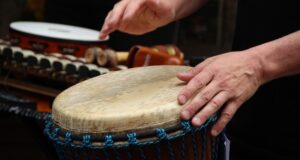Spring is in the air and California’s flora and fauna are awakening from their winter slumber. Deer, bears, birds and other wildlife are busy caring for their newborn offspring. During this season of rebirth and renewal, the Department of Fish and Game (DFG) recommends that people leave young wildlife alone if they see them in the outdoors. The improper handling of young wildlife is a problem in California and across the nation, most commonly in the spring.
People frequently encounter young wild animals and assume they need assistance or have been orphaned. However, in most cases neither assumption is true and the animals should be left alone. In 2010, approximately 439 fawns were turned into California rehabilitation facilities by well-meaning members of the public. Many of these fawns were healthy and should not have been disturbed.
“Never take a healthy fawn from the wild,” said Nicole Carion, DFG’s statewide coordinator for wildlife rehabilitation and restricted species. “Healthy fawns will be laying or standing quietly by themselves in one location for hours while there mother is away feeding. If you care, leave them there.”
Once a fawn is removed from its mother, it can lose its ability to survive in the wild. The same danger applies to most animals, including bears, coyotes, raccoons and most birds.
Disease is another reason that wild animals should not be handled. Wild animals can transmit diseases that can be contracted by humans, including rabies and tularemia, and also carry ticks, fleas and lice.
The responsibility for intervention should be left to DFG personnel or permitted wildlife rehabilitators. It is illegal to keep orphaned or injured animals for more than 48 hours in California. People can call a rehabilitator, who will determine whether there is a need for a rescue. Rehabilitators are trained to provide care for wild animals so they retain their natural fear of humans and do not become habituated or imprinted. For more information on wildlife rehabilitation, visit www.dfg.ca.gov/wildlife/rehab/facilities.html.



